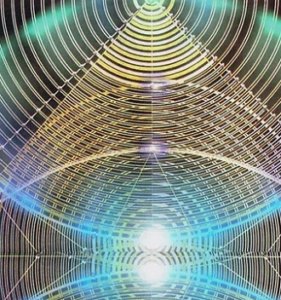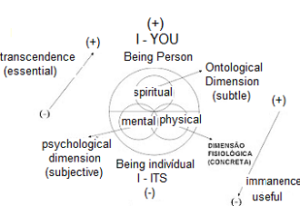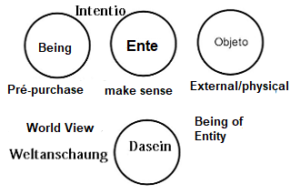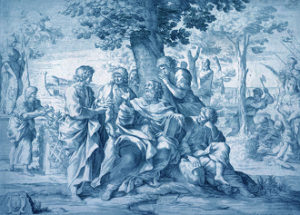
Arquivo para a ‘Linguagens’ Categoria
A new Copernican revolution
The center of our universe is no longer the sun, at the center of our galaxy there is a black hole, although the name seems to be negative, according to new theories after the James Webb super telescope it is just a new reality beyond current physical thinking, called Sagittarius A* it has a diameter of 35 million kilometers and is the most massive object in the galaxy (first photo taken in 2017 by the Event Horizon telescope, Feryal Ozel).
at the center of our galaxy there is a black hole, although the name seems to be negative, according to new theories after the James Webb super telescope it is just a new reality beyond current physical thinking, called Sagittarius A* it has a diameter of 35 million kilometers and is the most massive object in the galaxy (first photo taken in 2017 by the Event Horizon telescope, Feryal Ozel).
Edgar Morin points out that this and other scientific changes of our century are more “formidable” than the apparently revolutionary ideas of our time, which have changed little or nothing in the social, human and world conception we still have.
Morin wrote: “We have had to abandon an ordered, perfect, eternal universe for a universe in dispersive becoming, born in irradiation, in which order, disorder and organization act dialogically, that is, in a complementary, competing and antagonistic way” (Morin, 2003, p. 62), and also: “we are in a universe that is neither banal, nor normal, nor evident” (p. 63) and we should also think of human and social life in this way.
Thus, our tiny home in an almost infinite universe is “… a small cosmic wastebasket transformed in an improbable way not only into a very complex star, but also into a garden, our garden” (p. 64) and this is how we should think and not about conflicts.
“Our terrestrial family tree and our terrestrial identity card can now finally be known” (p. 64) and points to this as evidence of our problems.
The first piece of evidence he points to is economic unruliness: “We cannot consider the economy as a closed entity. It is an autonomous instance dependent on other instances (sociological, cultural, political), which are also autonomous/dependent in relation to each other” (p. 65), so the current wars are nothing more than a dispute over markets where we could recognize the interdependence and autonomy of each economy.
The second is the ecological crisis: the Meadows report commissioned by the Club of Rome in 1972, but also: “the great local catastrophes with far-reaching consequences: Seveso, Bhopal, Three Mile Island, Chernobyl, drying up of the Sea of Arai, pollution of Lake Baikal, cities on the verge of suffocation (Mexico, Athens)” and now more recently Fukushima and natural disasters.
He also pointed to the crisis of development and the universal crisis of the future, the one we are in today, with hatreds and world wars escalating where love and fraternity are suffocated.
“Thus, everywhere, the development of the science/technology/industry triad loses its providential character. The idea of modernity remains all-conquering and full of promise wherever there are dreams of well-being and liberating technical means” (p. 76).
Without a return to common sense, global cooperation, fraternity the crisis is inevitable.
MORIN, Edgar e Kern, Anne-Brigitte. (2003) Terra-Patria. Transl. Paulo Azevedo Neves da Silva. Brazil, Porto Alegre.
Identity and the human family
We have regional identities and cultures, linked to nations. The fact that nationalities exist should not be contrary to the existence and vision of a human family, not just because of our genetic and animal identity, but mainly because of our common life and relationships.
to nations. The fact that nationalities exist should not be contrary to the existence and vision of a human family, not just because of our genetic and animal identity, but mainly because of our common life and relationships.
Edgar Morin, in his book Terra-Pátria (Editora Sulina, 2003) traces the origins of a vision of man linked to nature (and consequently to the Cosmos), which will unfold in the visions of Bacon, Descartes, Buffon and Marx (Morin, 2003, p. 54) who made man “an almost supernatural being who progressively assumes the empty place of God” (idem), but this triggered an arrogant and authoritarian vision before the Cosmos and the Other.
As a result, we have regressed in our planetary vision: “The identity of man, that is, his complex unity/diversity, has been concealed and betrayed, at the very heart of the planetary era, by the specialized/compartmentalized development of the sciences” (p. 61), a xenophobic vision of nationalism and identity now explodes, inhibiting a vision of the human family.
Morin writes: “Nation and ideology have built new barriers, aroused new hatreds. The Islamist, the capitalist, the communist, the fascist are no longer human. “ (p. 60), note that this was written in 1993 (the original first edition in French).
Our vision of man has narrowed, Morin points out: “Philosophy, locked in its higher abstractions, has only been able to communicate with the human in experiences and existential tensions such as those of Pascal, Kierkegaard, Heidegger, without, however, ever being able to link the experience of subjectivity to anthropological knowledge” (idem, p. 61), the vision of these authors seems ethereal.
This has also happened in the humanities: “Anthropology, a multi-dimensional science (articulating within it the biological, the sociological, the economic, the historical, the psychological) that would reveal the complex unity/diversity of man, cannot really be built unless it is correlated with the meeting of disciplines … “ (pg. 62), and so the human fragment is translated into fragmented thought.
It is this fragmentation translated into war and hatred that demands an unveiling of Being, called for by Heidegger and thinkers who followed him (Hans-Georg Gadamer, Hannah Arendt and others), and which is also thought of by Morin: “Hence the primordial need to unveil, to reveal, in and through its diversity, the unity of the species, human identity, anthropological universals” (p. 60), to unveil (rather than re-veil, which is to veil again) as modern ontology says.
The human family can be unveiled in its common interests: ecology, economic balance and, above all, peace.
Morin, Edgar Morin & Kern, Anne-Brigitte. (2003) Terra-Patria. Transl. Paulo Azevedo Neves da Silva. Brazil, Porto Alegre : Sulina.
Power, Anger and Time
At a time of threats and hatreds that call into question not only peoples, nations and cultures, but even the process of civilization, it is good to review what we think of power and anger.
question not only peoples, nations and cultures, but even the process of civilization, it is good to review what we think of power and anger.
Sloterdijk (2006) had developed the question of Anger in current times, in a context of political psychology, values such as pride, ambition and vanity contribute to what can be called, in times of networks, a verticalization of social life.
The author explains that the social theories of “social stratification based on domination, regression and privilege” have been replaced by ideas of individual disciplining (asceticism, virtuosity and performance), which are seen as the causes of vertical differentiation.
This seemed obvious both to Michel Foucault, the sponsor of this interpretative approach, who in the 1970s denounced the intimate relationship between discourse and discipline, and to the vision of the linguistic turn, in his famous language games, which linked the latter to behavioral figures and opened up to sociology (and some half-philosophies) the understanding of latent rituals, typical of communicative games.
Half-philosophies because Sloterdijk will contest this reading and also various strands of Anglo-American analytical philosophy, which see language games as egalitarian and relativist, which they are not.
The so-called vertical tension in Sloterdijk’s work has great relevance for ethics and pedagogy, as it establishes a hierarchy between values, without which ethics is sabotaged, and the educator, in pursuing something higher than the student, must have something more in his soul and body, and this is his discourse on “the exercise society”.
What these authors draw attention to is the contemporary destruction of interiority, a theme that Byung-Chul Han goes to the root of, but which Heidegger, Hannah Arendt and now Sloterdijk have already drawn attention to: being-in-the-world has destroyed what was considered for thousands of years to be the most important thing: radically distinguishing oneself from this world.
In Heidegger this discourse is already present, pointing out that man as someone who no longer has an interiority that can serve as a shelter, for the fugitive from the world that he would eventually choose to be, modern conditions, opposes the certainty of a more than true life on the horizon of reality or in a hypothetical “end of the world”, this was written long before today’s apocalyptic and pseudo-prophetic visions, without seeing the absence of asceticism.
Hans Jonas wrote: “act in such a way that the effects of your action do not endanger the permanence of authentic human life on earth!” (Jonas, 2006) and Edgar Morin calls for a (re)humanized humanity, finally reversing the process of violent power, hatred and war.
JONAS, Hans. (2006) Das Prinzip Verantwortung: Versuch einer Ethik für die technologische Zivilisation. Frankfurt Suhrkamp.
SLOTERDIJK, P. (2006) Zorn und Zeit. Frankfurt: Suhrkamp.
Ontology, idealism and truth
Heidegger’s thought must start from the question of Spirit in Hegel, read by Byung-Chul in Introduction to the Phenomenology of Spirit “in terms of the forgetfulness of being” (Heidegger’s central question), he sees it as an “arid self” that finds “its limitation in the being that meets it” (Han, p. 334 quoting Hegel).
of Spirit in Hegel, read by Byung-Chul in Introduction to the Phenomenology of Spirit “in terms of the forgetfulness of being” (Heidegger’s central question), he sees it as an “arid self” that finds “its limitation in the being that meets it” (Han, p. 334 quoting Hegel).
Although he recovers Hegel, in part, in the epigraph to the last chapter: “truth is the whole”, he re-discusses dialectics and its metaphysics in idealism: “in relation to ‘just being’, which empties it to a name ‘that no longer names anything’, natural consciousness … when it becomes aware of being, assures itself that it is something abstract. “ (Han, 2023, pg 336).
Natural consciousness (seen in this way) “dwells on ‘perversities’ … “it tries to eliminate one perversity by organizing another, without remembering the authentic inversion” where ‘the truth of the essence of being is gathered into being’ (pg. 336 with quotes from Heidegger), which sees this as a step backwards and the forgotten, misunderstood ‘already’ (pg. 337), does not appear completely negated, it appears in the form of ‘not yet’ which is not a negation, nor a barricade, placed ‘next to the already prevents it from appearing’ (pg. 337).
There is a whole development in contrast to Hegel’s dialectic, more than a topic, it could well be a book, but the dialogue he engages in with Derridá and Adorno in the chapter on Mourning and the work of mourning, leads to his vision of the whole outside of dialectical abstraction, he says the concern with immortality, with death and with the work of mourning.
The “cardiographic” archive of the history of philosophy, in which the philosopher “works” to reverse the negative of being, is not the only secret in the heart of Plato or Hegel (p. 384).
This is what will form the basis of his “work of mourning”: “to be capable of death as death”, that is, to be capable of mourning, this “tragedy” “differs radically from the noisy work of mourning of the Hegelian dialectic” (Han, 2023, p. 385).
“Tears free the subject from his narcissistic interiority … they are the spell that the subject casts over nature“ (Han, p. 394) now quoting Adorno, and the author states that ‘Aesthetic Theory is the book of tears (idem) and that contrary to Kant, and that ’the spirit perceives, in the face of nature, less its own superiority than its own naturalness” (p. 395).
“The aesthetic experience shakes the narcissistic subject who thinks he is sovereign and causes the hardened principle of the ‘I’ to crumble … the tear of the shaken and moved subject proves to be capable of truth” (p. 395).
Capable of truth, of the infinite and for those who believe in God, not a God of passing goods and false joy, but that of the already, but not yet, that beyond the pain and transience of temporal things.
Han, B.C. (2023) Coração de Heidegger: sobre o conceito de tonalidade afetiva em Martin Heidegger. Transl. Rafael Rodrigues Garcia, Milton Camargo Mota. Brazil, Petrópolis: Vozes.
Noetics, Ontologie and War
For Plato, noesis is superior to dianoia, which is discursive and apparently logical, while the former is a high possible mental activity, inhabiting the sphere of Good and Harmony.
is discursive and apparently logical, while the former is a high possible mental activity, inhabiting the sphere of Good and Harmony.
It is a possibility of access to the “divine” world (Plato’s highest good which is in the eidos), it is transcendent, absolute, beyond ordinary human reasoning, philosophers pursue it without even touching on the question of the belief in a higher God where noesis “dwells”, it is not Being, but a mental attitude.
Dianoia, on the other hand, while it inhabits logical, mathematical and technical reasoning, is attached to what the mind can grasp of the earthly world, even though it admits to mistakes, truths that are not absolute and sometimes confusing, they inhabit the daily life of the human being, who is also disconnected from Being.
There is a foundational line that goes from phenomenology to the anthropotechnics of Peter Sloterdijk and Byung-Chul Han, essentially involving the question of Being, the link between noesis and noema, weakened by the bombardment of narratives that the digital universe has provided, but the forgetting of being, the absence of interiority have led to what Chul-Han calls “deauritization” and “pure facticity”:
“The disenchantment of the world expresses itself as de-auritization. Aura is the radiance that elevates the world beyond its pure facticity, the mysterious veil that envelops things” (Han, 2023, p. 80).
It’s not a question of denying facticity, but of not allowing its noesis, that is, the initial comprehension in the mind in all its aura, it makes a “narrative selection”, in the words of Byung-Chul (talking about photography): “It extends or shortens the temporal distance. It skips years or decades. Narrativity is opposed to chronological facticity” (Han, 2023, p. 81).
These are the lies of wars, of all wars because they hide their real motives, but particularly of current wars because they use narratives to change what is evident if read in chronological facticity, in a very current example, last week’s bombing of a hospital for the elderly in Ukraine (photo) and the bombing of UN bases in Lebanon, this correlates with cruelty and the absence of any narration to justify them.
Peace lies in the hearts and authorities that maintain the aura of hope, the spirit of solidarity.
Han, Byung-Chul. (2023) A crise da narração. Transl. Daniel Guilhermino. Brazil, Petrópolis: Vozes.
Heidegger and the affective tone
Intentionality is inherent to Being, it is a manifestation of interiority.
manifestation of interiority.
As a good orientalist, although based in Germany, Byung-Chul Han’s analysis does not start from the objectivist, materialist or substantialist perspective of the classic authors of Western philosophy, but from the holistic perspective of what he calls “affective tonality” in Heidegger.
To understand this different form of ascesis, contrary to the distance from the object that idealism proposes, the affective tonality “possesses an a priori anteriority that is not, however, attributable to the transcendental capacity of the subject, a pre-vision that sees before the object be outlined” (page 58).
Understanding objects as “beings”, “letting entities be, which is an attunement, penetrates and precedes all behavior that remains open and develops” and “the opening of entities in their totality does not coincide with the sum of currently known entities” (pg. 58), so any rationalist analysis is fragmentary and does not “see” the entities.
And furthermore, the “in the midst of beings in totality” is not verified by any reflection, so the thematization itself, “which always proposes an original scenario” is already an interpretation (pg. 59).
The affective tonality opens the space of there, according to Han, “which floods consciousness and which must be given in advance so that it can begin its thematizing work and discourse, and concludes with a quote from Heidegger: “Consciousness is only possible on the foundation of there as a derivative mode of it”.
Thus “the a priori event already presupposes an interpretation, and this temporal difference, which is placed before the interval of countable time, remains constitutive for the difference between being and being” (pg. 59), which is why ontologically the difference exists and not the idealistic separation as idealism supposes.
Thus, true ascesis is not a separation of the world (objective and subjective), but in the world through the difference between being and being, only a divided ascension (through death) can definitively separate being from being, thus we are in the relationship of an “affective tone ”.
Han, B.C. (2023) Coração de Heidegger: sobre o conceito de tonalidade afetiva em Martin Heidegger (Heidegger’s heart: on the concept of affective tonality in Martin Heidegger). Transl.Rafael Rodrigues Garcia, Milton Camargo Mota. Brazil, Petrópolis: Vozes.
Truth, noesis and The Bad
In the prolegomena to the first volume of Logical Investigations, Husserl, who had been strongly influenced by Franz Brentano, the father of social psychology, sees relativism and its basis in the turbid worldview as a problem, so the relativity of the existence of a world is neither objective nor subjective, but “the complete objective unity that corresponds to the ideal system of all truths of fact, and is inseparable from it” (HUSSERL, 2005, p. 136).
who had been strongly influenced by Franz Brentano, the father of social psychology, sees relativism and its basis in the turbid worldview as a problem, so the relativity of the existence of a world is neither objective nor subjective, but “the complete objective unity that corresponds to the ideal system of all truths of fact, and is inseparable from it” (HUSSERL, 2005, p. 136).
This is because each type of object has its own possible developments, so to speak, it has its own method prescribed a priori by laws of essence determined by the eidos of the objectivity in question (Husserl, 2006, 309), which means that it is the essence of the objectivity that predetermines the type of concordant development one has in experiencing it.
There can be the experience of evidence in this experience of the object, and this contributes to its status as an entity as a “true being” (Husserl, 2006, p. 309), what Husserl called “Lebenswelt”, a logic of life, in this case of the experience of the object.
In this way, an object that is “pure X” remains stable in the midst of the multiplicity of noematic characters that emerge in the course of an experience, the object targeted in thought by human consciousness, it precedes the first intuitive idea that is noesis (thinking X).
Husserl wrote that this noetic vision is a synthesis of identity, a central concept for establishing the “effective”, “true” object, the objectivity apprehended in evident donation, in a synthesis of concordant identity:
To every “truly existing” object corresponds as a matter of principle (in the a priori of unconditioned eidetic generality) the idea of a possible consciousness, in which the object itself is originally apprehensible and, moreover, in perfect adequacy. Conversely, if this possibility is guaranteed, the object is ipso truly existent” (HUSSERL, 2006, p. 316).
The syntheses involved in phenomenological thinking, for establishing the “being” or “non-being” of noematic correlated objects, are “intentionalities of a higher order”, which is what Husserl took from Franz Brentano’s neo-Thomist thinking, getting rid of the psychologism, the eidos that we have of good and evil, still scholastic from the father of social psychology.
In Husserl’s view, the intentionality of the evident giving of aspects of the object that are not yet present forms an intentional horizon, which in turn brings its predetermined potentialities, so the factual visions of war and peace, of the devil and evil are false.
They are ill-formed intentionalities (in the sense that they don’t have a noetic truth), the truth as “being”, as “the true” in the phatic and idealist readings, is for Husserl an “effectiveness” (Wirklichkeit) since it has coherence at its core.
Husserl, E. (2005) Investigações lógicas. Primeiro volume: Prolegômenos à lógica pura. Tradução de D. Ferrer. Lisbon, PT: Centro de Filosofia da Universidade de Lisboa.
Husserl, E. (2006) Ideias para uma fenomenologia pura e para uma filosofia fenomenológica. Tradução de M. Suzuki. Brazil, Aparecida, SP: Ideias & Letras.
Interiority, truth and wars
The abandonment of conceptions that lead humanity to elaborate inwardly, elevating thoughts and spiritualities, is pointed out in countless contemporary readings. We have posted here Heidegger, Hans-Georg Gadamer, Peter Sloterdijk, Edgan Morin and Byung-Chul Han, among others, of course.
humanity to elaborate inwardly, elevating thoughts and spiritualities, is pointed out in countless contemporary readings. We have posted here Heidegger, Hans-Georg Gadamer, Peter Sloterdijk, Edgan Morin and Byung-Chul Han, among others, of course.
But here we want to start with the question of method and return to the phenomenology of Husserl, one of the first to question “The Crisis of the European Sciences and Transcendental Phenomenology – An Introduction to Phenomenological Philosophy” (Brazilian edition by Forense Universitária, 2012), which points out this question and in the third part clarifies the transcendental question and the misunderstandings of contemporary science.
This is how he points out his questioning of the concepts of “outer experience” and “inner experience”: “The fundamental absurdity of wanting to seriously consider men and animals as dual realities, as a link between two realities of different kinds, comparable in terms of the sense of reality, and thus also wanting to research minds using the scientific-corporeal method, i.e. in a natural-causal way, existing spatio-temporally as bodies – resulted in the supposed obviousness of a method to be configured in a way analogous to that of the science of nature” (Husserl, 2012, pgs. 177-101). 177-178).
In this sense, he questions both Cartesian dualism and the foundation of a science that creates a “parallelism” where: “the physical-mathematical nature is the objectively true nature; this nature must be the one that announces itself in merely subjective appearances” (pg. 179), and his question is why “is not the nature of the world of life, this mere subjective element of external experience, but this is counterposed to external experience ?
Interiority in philosophy is a founding aspect as long as we look at the ontological question of Being, already present in Plato and Aristotle, and which in St. Augustine will play a central role in his worldview, where he seeks a profound sense of “beatitude” of the soul.
This interiority, reduced to the interior and immediate visions of the world, separates man from the world, from others, and he starts to project himself excessively onto objects, “things”, up to the apex of the digital world, called by Byung-Chul Han “non-things”, to talk about something that is currently on the rise, says the author: “artificial intelligence doesn’t think”.
This is how we move mechanically towards interests for external conflicts that lead us to increasingly contentious positions on values and non-values that justify violence.
The problem, as Husserl points out, is that all of this stems from a “method”, i.e. the particular way in which we look at the exterior and exercise our interiority, opposed in their origins by Brentano and Dilthey: “as in general in the 19th century, at the time of the passionate efforts to produce a rigorously scientific psychology, presentable alongside the science of nature” (pg. 180), but this psychologism is overcome by Husserl’s criticism of Brentano and later by Hans-Georg Gadamer.
What is interiority in sense of live, in new experience of conflits and wars ?
Husserl, E. (2012) A crise das ciências europeias e a fenomenologia transcedental: Uma introdução à filosofia Fenomenológica. Transl. Diogo Falcão Ferrer. Brazil, Rio de Janeiro: Forense Universitária.
(english edition) Husserl, E. (1970) Crisis of European Sciences and Transcendental Phenomenology, Translated by David Carr. Evanston, Illinois: Northwestern University Press.
Truth and Being
For Socrates, the truth was not with men, but between men, and with this he opposed Protagoras who said that “man is the measure of all things”, the relativism of the Sophists.
between men, and with this he opposed Protagoras who said that “man is the measure of all things”, the relativism of the Sophists.
Heidegger updates the concept of the truth of being (allétheia) and clarifies the misunderstanding that being as a present to the being of man, the misunderstanding that could occur, which would be to take the openness of being (geschlosenheit) as the determining element for understanding the truth of being (allétheia), the truth is not of man, but of being.
This dynamic relationship proper to the re-vealing of being (re-veiling, i.e. other veils) is not about the “function of the transcendental subject” who has the power of the keys to open up the true and the not true, which remains in the field of binary logic, but rather the power to unveil being.
The ambivalence of the play of tensions between Being and Appearance lies in the field of re-revelation, where truth is also ambivalent, but if thought of as Being, both can lead to a new re-revelation, says Heidegger: “Being, as appearance, is no less powerful than being, as re-revelation and discovery (unverbogenheit)” (Heidegger, 1984, p. 254).
In a way, for both Descartes and Kant, Heidegger sees them as looking at the world as something simply given, such as the physical and material world, since traditional ontology is structured in this way, being lives in a relationship between the thing and the intellect.
Thomas Aquinas already saw it this way, and what changes from Franz Brentano onwards is a Thomist sub-category of consciousness, which is consciousness of something, and then Husserl extends it to a return to the “thing in itself” (nature for Kant and Descartes) as intentionality and reduction (aidética, a name that comes from idea, but for the Greeks) which for him means creating a mental object.
Heidegger unveils this truth of being by realizing that there is an ek-sistent being of a being that flits from one object to another in everyday life, deviating from the mystery of Dasein.
In Heidegger’s view, there is no pure contemplation of Being, but rather a relationship between Being and Being, between appearance and essence, but, in our view, there is still a veiling of its finitude, of still remaining a being-of-the-sent, in other words, a thing even though it has an ontological relationship, transcendence remains in the object, what are we beyond the being?
We return to Heidegger’s partially-answered question: “What preserves being in this relationship with concealment?” I don’t want to force a theological hypothesis, but I’ll leave it up in the air: pure Being can enter into Being, without losing its essence, what will return from this finitude?
Heidegger, M. (1984) A tese de Kant sobre o ser. Brazil, São Paulo: Abril Cultural (Col. Os Pensadores).
Wars and narratives
Aeschylus, writing from ancient Greece, is the author of the phrase: “truth is the first victim of war”, retired Russian general Andrey Gurulyov, spoke on the Russia-1 channel, pointing out what Russia’s targets would be, that it was preparing for a major war, Islamic Jihad is a group with strong influence in Iran and which preaches the end of Israel, its discourse is theocentric and not geopolitical.
author of the phrase: “truth is the first victim of war”, retired Russian general Andrey Gurulyov, spoke on the Russia-1 channel, pointing out what Russia’s targets would be, that it was preparing for a major war, Islamic Jihad is a group with strong influence in Iran and which preaches the end of Israel, its discourse is theocentric and not geopolitical.
These are just a few half-truths about the war. Of course, Israel and Ukraine are allies of the West in the economic geopolitical struggle to preserve the rights of companies and big capital, which is why both sides find it difficult to understand “civilizational” peace.
In Plato’s dialogue Theaetetus, regarded as one of the first in history on relativism, the ideas of appearance, truth and soul are combined; Socrates’ first demand to start the dialogue is that Theaetetetus abandon his initial ideas, and when he asks what knowledge is and gets an answer about geometry and other arts, Socrates replies ironically: “You are noble and generous, friend, for they ask you for something simple and you offer multiple and diverse things.” The second question is how to reach knowledge.
The second question is how to arrive at knowledge, and Theaetetetus’ answer is “sensation” (or perception). Socrates indicates that we must abandon the “familiarity” we have of things, he says in the dialogue: “It seems to me that he who knows something perceives what he knows, and to say the thing as it now manifests itself, knowledge is nothing more than sensation.”
The second answer is an advance on the first, because this is how the Greeks considered them: “On this all the wise men, one after the other, except Parmenides, must agree: Protagoras, Heraclitus, Empedocles and, among the poets, those who are at the top of each of the compositions, Epicarmo, in comedy, and Homer, in tragedy…”, quoting the Greeks up until that period, the so-called pre-Socratics.
Thus, until then, truth was confined to sensation. When he begins his dialogue with Protagoras, he arrives at the idea of the first misconception of relative truth: “The man who is the measure of all things would not, in the end, be a man confined to the restricted circle of his most immediate experience and of what seems true to him alone,” and this refers to appearance.
Using this idea of “familiarity” with things, Plato opens up a crisis in the Greeks’ idea of knowledge, and thus opens up a new ontological path about the soul, starting from Homer’s “heart of the soul” (194c), there would hardly be any occasion for error, because it (the soul) would promptly make the correct identification of the current impression, breaking down prejudices.
Plato. (2010) Teeteto. Trad. Adriana Manuela Nogueira e Marcelo Boeri. LisboN: Fundação Calouste Gulbenkian.

